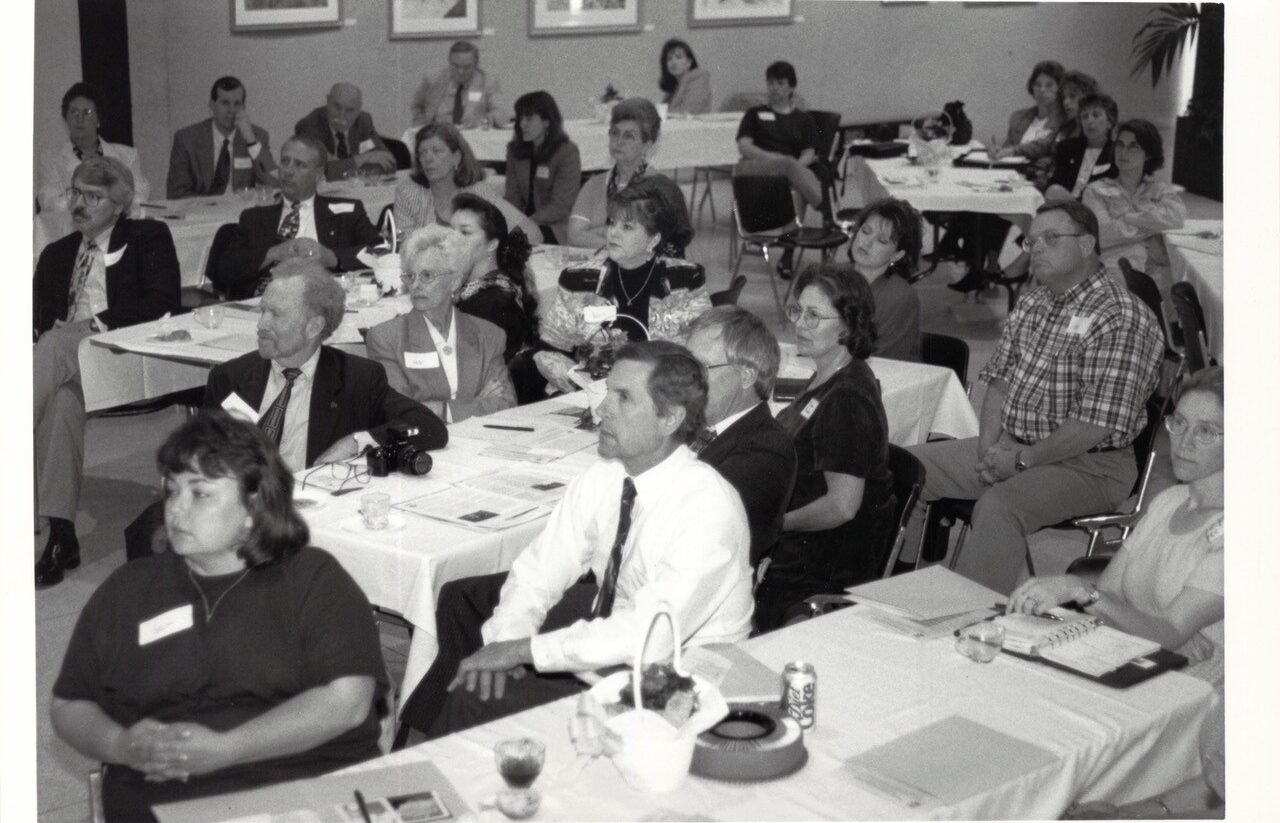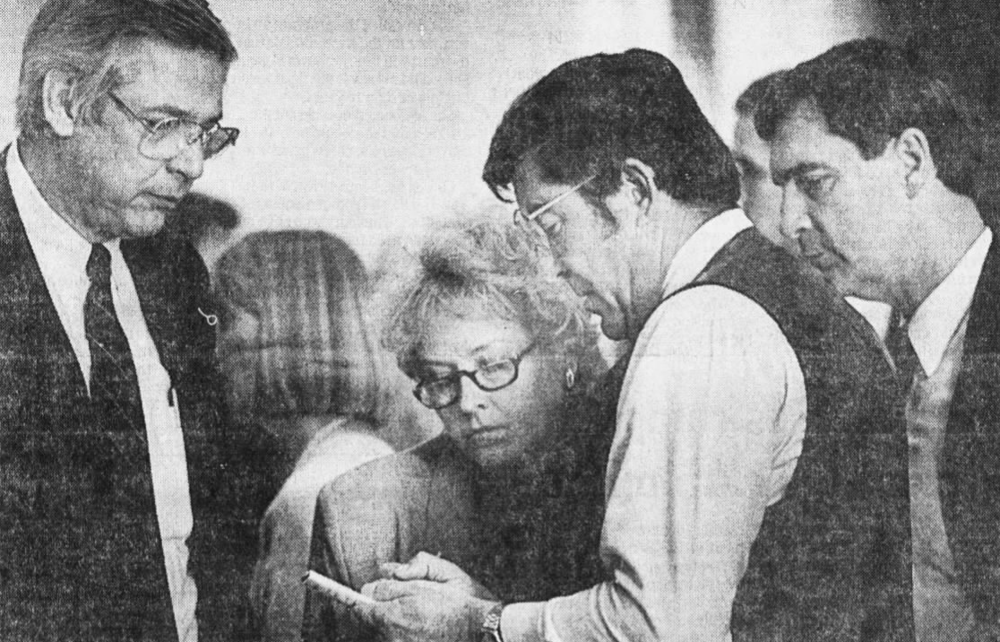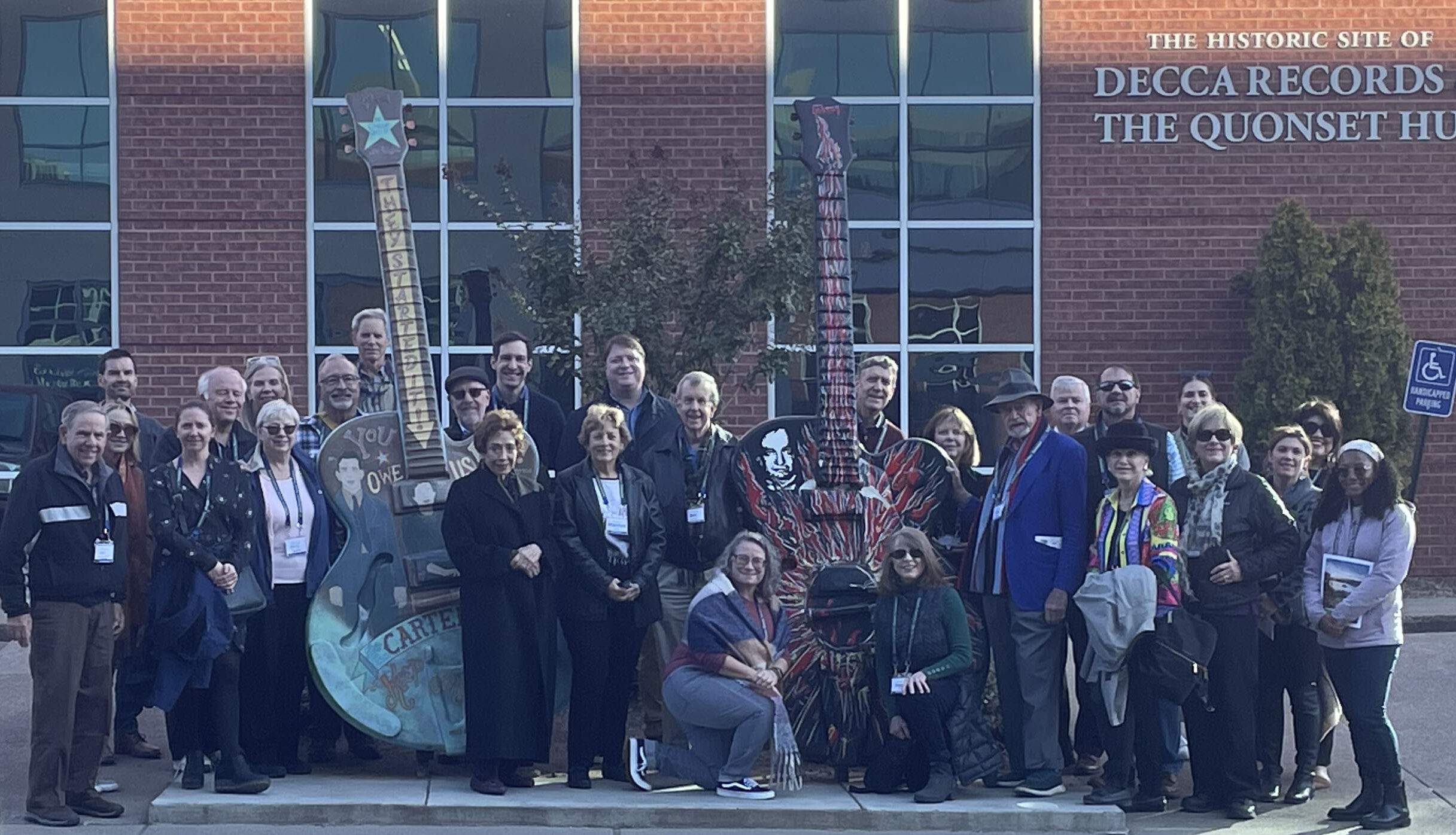
Scenic Tennessee
Support Us
Your gift makes a difference.
Get our latest news and updates.
Contact Scenic Tennessee
45 Burris Court
Mount Juliet, TN 37122
(615) 294.-651 margedavis@scenictennessee.org
About Scenic Tennessee
Our History
Scenic Tennessee—originally known as Tennesseans for Scenic Beauty, in keeping with the National Coalition for Scenic Beauty—was formally chartered on July 8, 1987. The organization had its beginnings, however, some months earlier.
Shortly before Christmas 1985, Knoxville architect and planner Eugene Burr, chairman of the Ad Hoc Committee for Signage for the Greater Knoxville Beautification Board, mailed a memo to conservation and beautification groups around the state, inviting them to a meeting in Nashville in January 1986 to discuss more effective billboard regulation in Tennessee.
As it happened, the meeting coincided with a press conference on January 6, 1986, in which then-Governor Lamar Alexander announced the final major initiative of his tenure: an aggressive package of conservation and beautification measures known collectively as Cleaner Highways. Designed to be implemented over the next ten years in advance of the state’s 1996 bicentennial, Cleaner Highways was uncommonly ambitious, proposing to:
- Ban all new billboards along rural interstate highways in Tennessee
- Remove several thousand nonconforming billboards on those 670 miles of interstate
- Prohibit tree-cutting in front of billboards on those interstates
- Establish a system of uniform “logo signs” at rural interstate exchanges
- Increase billboard spacing statewide, from 500 to 1,000 feet outside city limits and from 100 to 500 feet within cities
- Screen and landscape the 100 worst junkyards, both rural and urban
- Landscape 100 interstate exchanges
- Designate 16 scenic corridors and make them off-limits to billboards and junkyards

The Call for Cleaner Highways
Few administrative acts of Alexander’s tenure created as much furor as Cleaner Highways, with one newspaper headline declaring “It’s War!” and legislative hallways filled daily with lobbyists, sign companies and roadside advertisers. But if the measure mobilized private-sector interests, it also galvanized scenic activists, including the Tennessee Conservation League, the League of Women Voters, garden clubs, outdoor groups and a coalition of environmentalists, municipal planners, urban designers, tourism councils, neighborhood organizations, academics and a significant number of businesses that understood the economic importance of scenic landscapes. As Marge Davis recalls in her conservation history Sportsmen United:
For three months, [these] volunteers polled voters, distributed fact sheets, met with legislators and even tied yellow ribbons around roadside trees. When Commissioner of Conservation Charles Howell began wearing a yellow tie to work, everyone in the campaign started wearing yellow. The group got free legal advice not only from the national [Coalition for Scenic Beauty] in Washington but also from the Southern Environmental Law Center in Virginia, whose sign-control experts had successfully challenged the First Amendment rights of billboards and other forms of commercial speech.
In the end, Cleaner Highways did not pass. The billboard lobby was simply too strong, Alexander’s legislation perhaps too ambitious. However, the effort had given the fledgling scenic activists their first lesson in citizen lobbying.
A second lesson came the following year, 1987, when the billboard industry proposed a system of logo signs at interstate exits. Also known as “official business directional signs,” uniform logo signs had been introduced in Maine and Vermont after those states banned billboards (Vermont in 1968, Maine in 1977). Unlike those programs, however, the proposal in Tennessee had nothing to do with reducing the number of billboards. Rather, logo signs would merely “supplement” existing signage, and they would not be used at all on urban interstates around Nashville, Knoxville, Memphis, and Chattanooga. Tennesseans for Scenic Beauty and its allies again mounted an intensive public education campaign, but on March 24, 1988, the Senate narrowly approved the industry’s bill (an earlier House version had already passed), and Gov. Ned McWherter signed it. Four months later, the marketing contract for Tennessee’s logo signs was awarded to a Memphis sign company headed by Felicia Carson, one of the logo bill’s chief lobbyists.

It was another hard lesson in citizen advocacy, but one that stuck. In the ensuing years, Tennesseans for Scenic Beauty (renamed Scenic Tennessee in 1990, when it officially became an affiliate of Scenic America) learned its way around the legislative process and earned the respect if not the votes of many in the power structure.
Our Affiliates and Affiliations
Scenic Knoxville

Scenic Knoxville was formed in February 2008 as an affiliate of both Scenic Tennessee and Scenic America. Galvanized by the emergence of digital sign technology, the new organization took on, and won, a campaign to ban digital billboards within Knoxville city limits, a move that significantly strengthened the city’s 2001 ban on new billboards, by prohibiting the digital conversion of previously static signs.
In the years since, Scenic Knoxville has racked up a host of equally impressive victories, including a ban on digital billboards in Knox County; a ban on new electronic message centers in the city (and tighten restrictions on existing EMCs); and passage of a new city sign ordinance that has dramatically improved Knoxville’s appearance by reducing new business sign heights, implementing procedures for quicker removal of abandoned signs and numerous other significant changes.
In 2016, Scenic America recognized the extraordinary achievements of this all-volunteer organization by presenting Scenic Knoxville with its highest honor, the Stafford Award.
Tennnessee Conservation Voters
 Scenic Tennessee is a member organization of Tennessee Conservation Voters, a coalition of conservation groups and individuals dedicated to raising voter awareness, advocating stronger laws and holding elected leaders accountable for safeguarding the environment of Tennessee. As a 501(c)(4) nonprofit organization, TCV represents the collective interests of its member groups at the legislature, through effective lobbying and administrative advocacy.
Scenic Tennessee is a member organization of Tennessee Conservation Voters, a coalition of conservation groups and individuals dedicated to raising voter awareness, advocating stronger laws and holding elected leaders accountable for safeguarding the environment of Tennessee. As a 501(c)(4) nonprofit organization, TCV represents the collective interests of its member groups at the legislature, through effective lobbying and administrative advocacy.
Our Awards
- Bronze Award, 2015 Tellies
- Gold Award, 2014 MarCom Awards
- Award of Distinction, 2014 Videographer Award
- Emerging Media Leader Award, 2014 Summit International Awards

2022 Scenic Symposium
Scenic Tennessee co-hosted the 2022 Scenic Symposium in Nashville in partnership with Scenic America. Learn more about the event and see the presentations.
Our Board
Marge Davis, President

Marge is a conservation writer and editor who has written for many of Tennessee’s conservation-related publications and entities, including The Tennessee Conservationist magazine, the Tennessee Chapter of the Nature Conservancy and the Waste Reduction Assistance Program of UT’s Institute for Public Service / Center for Industrial Services. Twice named Conservation Communicator of the Year by Tennessee Wildlife Federation, she is currently updating her 1997 conservation history of the Volunteer State, Sportsmen United. From 2004 to 2019 she coordinated the Tennessee Bottle Bill Project, an effort to reduce litter and increase recycling. Marge served two terms on the Governor’s Advisory Council for Keep Tennessee Beautiful, is a longtime board member of the national Container Recycling Institute, and since February 2022 has been on the board of Scenic America. She has a bachelor’s degree in English from Bates College in her native Maine and a doctorate in English from Vanderbilt University. She and her husband Paul Davis, retired director of TDEC’s division of water pollution control, live on Old Hickory Lake in Wilson County with their dogs Emma and Charlie.
Doug Fulmer, Treasurer

Doug has 50 years’ experience in politics, nonprofit work and journalism. He began volunteering for political campaigns in 1972 at the age of 13 in his hometown of Akron, Ohio. After earning a master’s degree from the Maxwell School of Citizenship and Public Affairs at Syracuse University, he worked for a variety of political campaigns and nonprofit groups, including a stint as director of state and local affairs for Scenic America (then called the Coalition for Scenic Beauty). He entered the consulting world in 1992 as a senior associate and Washington representative for Phil Noble & Associates, and formed Douglas Fulmer & Associates in 1993. The company has since worked with more than 350 campaigns, associations and companies in 40 states, providing research, phone and digital advertising services. Political clients have ranged from candidates for city council to governorships to the U.S. Senate. Doug has also earned a national reputation as a freelance journalist, with more than 800 of his articles appearing in 31 newspapers, magazines and websites since 1990. He lives in Mount Juliet with his wife Eng Chin and their daughter Marjorie.
Leslee Dodd Karl, board member

Leslee Dodd Karl came to Scenic Tennessee by way of the Tennessee Federation of Garden Clubs. As a leader in Murfreesboro’s Stones River Garden Club, Leslee had a particular interest in litter and recycling, directing waste management at Murfreesboro’s JazzFest and helping secure TFGC’s early endorsement of a Tennessee beverage container deposit bill. Leslee has a bachelor’s and master’s degree in biology from Middle Tennessee State University and a doctorate in animal physiology from Mississippi State University. By training and education she is a research scientist in neurophysiology and neurotoxicology; her last appointment was in the pharmacology department at Northwestern University’s Feinberg School of Medicine in Chicago. That was followed by nine years at chemical abstracts service in Columbus, Ohio. After the death of her husband in 1996, Leslee returned to Tennessee and became involved in various community activities and organizations at the board level, with an emphasis on homelessness and the environment. In 2013, after becoming certified in internal family systems therapy, she established a life recovery coaching business.
Gene Burr, AICP, board member

An architect and urban planner in Knoxville, Gene earned a bachelor’s in architecture at Auburn University and a master’s in urban planning at the University of Tennessee and studied new town planning at the University of Manchester in England. An early chairman of Knoxville’s Historic Zoning Commission, Gene was on the founding board of the East Tennessee Community Design Center and Knoxville Heritage, and was instrumental in creating Scenic Tennessee in 1987 and Scenic Knoxville in 2008. His professional practice has included restoration of courthouses in Knox and Jefferson counties and the design of town centers in Historic Rugby and Historic Jonesborough. As the preservation planner for Key West for five years, he could sail as often as he liked while assisting the island community in developing its preservation standards. That was followed by eight years as project manager for the conversion of the Memphis defense depot to a private sector business park. His civic activities, especially in educational outreach to schools, earned him the Francis Gassner Award from the Memphis AIA Chapter and the East Tennessee AIA Gold Medal. He prizes his partnership with Rosemary Lykens Burr and their two children, Bettina and Corbin.

Sign Up for Updates
Join our email list for the latest news and updates from Scenic Tennessee.
Sign Up